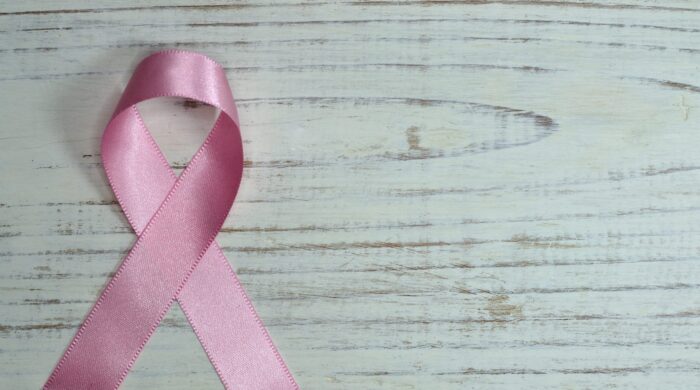The most common cancer (with the exception of skin cancer) among women in the U.S. is breast cancer. In fact, 1 in 8 women are at risk of getting the disease in their lifetime. Early detection is the key to successful treatment and survival. To support patients in getting these life-saving screenings, WWMG partners with Fred Hutch Cancer Center to offer the mobile Mammogram Van at our primary care locations.
In recognition of National Breast Cancer Awareness Month, this post will examine signs, symptoms, treatments and other common facts to help shed more light on the disease.
What is Breast Cancer?
Breast cancer is a disease that is the result of cells in the breast growing out of control. These cells form tumors, which can sometimes be felt as lumps. Those cells can then invade surrounding tissues and spread to other areas. Breast cancer can begin in different parts of the breast and doesn’t always grow in both breasts.
Types of Breast Cancer
There are several different types of breast cancer.
Ductal Carcinoma Breast Cancer is the most common form of the disease. The tumors for this type of cancer are formed in the duct cells that carry milk to the nipples. If the cancer is “in situ” that means that it remains in the original location; if it’s “invasive,” that means it has spread to other parts of the body.
Inflammatory Breast Cancer is a rare form of the cancer that is often difficult to detect, because it’s caused by cancer cells that block lymph vessels in the skin. This may not show up on a mammogram or be felt in a self breast exam. Imaging tests are typically used to learn how far this aggressive form of the cancer has or has not spread.
HER2 Positive Breast Cancer indicates a higher level of the HER2 protein in the breast tumors. This cancer can grow and spread faster than other types of breast cancer.
Triple Negative Breast Cancer is a cancer without the HER2 marker or estrogen or progesterone hormone receptors. This type of cancer is more common in African American women and younger women of all races and is traditionally more aggressive than other forms of breast cancer.
Lobular Carcinoma Breast Cancer is cancer that begins in the lobes of the breast. It is often found in both breasts vs. just one like many other forms of the cancer.
Paget’s Disease of the Breast is one of the rarest forms of breast cancer, representing 4% or less of all breast cancers. It is non-invasive and concentrated on the skin of the nipple and/or the areola.
Signs and Symptoms of Breast Cancer
Common signs and symptoms of breast cancer may include any of the following:
- Swollen or enlarged lymph nodes around the breast
- A dimple in the breast
- Nipple rashes or itchy skin surrounding the nipple
- Nipple discharge (other than breast milk)
- Nipple turning inward into the breast
- Breast size or shape change
- Lumps in breast
- Darken or swollen skin on the breast
It’s important to note that although these symptoms can be an indication of cancer, they can also be indicative of other (less serious) issues. It’s always best to seek professional help when symptoms surface.
Screening, Diagnosis and Treatment
Who should get screened?
The American Cancer Society recommends that women without an elevated risk of breast cancer should be screened annually beginning at age 45. Then, if no abnormalities are detected, every other year once they reach the age of 55. For those with high risk factors for breast cancer, the guidelines suggest screenings a few years prior to age 45 and an MRI to complement the regular mammograms.
Screenings
There are many ways to screen for breast cancer including self exams, regular physical exams, mammograms, ultrasounds, MRIs, biopsies and genetic testing. WWMG offers screenings via a mobile Mammogram Van at our primary care locations.
If you have a history of breast cancer in your family or other risk factors, it is prudent to begin regular screenings earlier than the recommended age of 45. Otherwise, annual screenings beginning at that age should suffice.
Diagnosis
Once breast cancer has been detected, additional procedures and tests will be conducted to help formulate the best plan for treatment. Depending on the type of cancer found, patients could expect to have a chest X-ray; bone scan; lymph node biopsy; receptor testing; a Computed Tomography (CAT) scan and/or a Positron Emission Tomography (PET) scan.
Treatment
The treatment for breast cancer depends on many factors including the type of cancer the patient has; what stage the cancer has grown to when it’s found and the patient’s age/well-being otherwise.
Treatments may include surgery, chemotherapy, radiation, hormonal therapy, immunotherapy, medications and holistic techniques.
Myths vs. Facts About Breast Cancer
Unfortunately, there is a lot of misinformation that has spread regarding breast cancer. Here are some of the myths surrounding breast cancer that hold no basis in fact:
- Lumps on the breast always indicate the presence of breast cancer
- Only women can get breast cancer
- Mammograms can cause breast cancer
- Antiperspirants and deodorants cause breast cancer
- Breast cancer is contagious
- Dairy consumption increases the risk of getting breast cancer
None of the above statements are true, and they serve as a reminder to be sure to perform due diligence when researching such topics.
Talk to a Provider at WWMG
Our primary care providers can assist you with breast cancer screenings, including scheduling an appointment with our mobile Mammogram Van (a partnership with Fred Hutch Cancer Center). Don’t wait, schedule your screening today.
